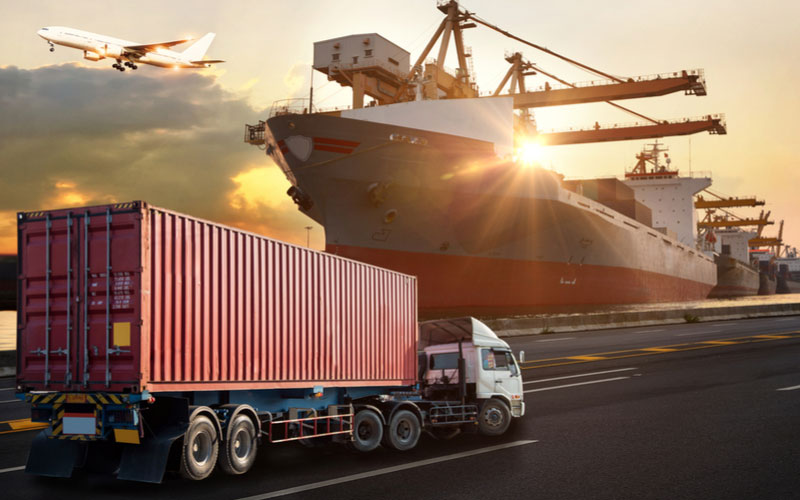Finding the right multi-carrier shipping solution (MCSS) is essential for your business to thrive in the global consumer marketplace. A poor choice can lead to shipping failures, cost overruns, and customer frustration. Customers seek omnichannel retail experiences, convenient e-commerce returns management, and eco-friendly logistics. Read on to discover four significant signs that it’s time to select a new MCSS.
Ocean Freight
Whether shipping a full container or bulky, oversized cargo, the right ocean freight solution can help you move your products faster, more reliably, and at a lower cost. It can also provide the flexibility to prioritize containers with time-sensitive promotions, seasonal events, or back-to-school merchandise and ensure they are available at stores even when ports are congested or disrupted. Ocean shipment tracking is usually much less reliable than air freight as shippers and BCOs struggle with inaccurate or delayed ETAs due to delays or other issues at the ports of origin or transshipment stops. However, as digital-first solution providers and industry stakeholders enter the fray, solutions considering ocean freight’s unique industry specificities are surfacing.
Visibility and communication between companies, ocean carriers, and the supply chain are critical for a seamless international shipping experience for shipping companies in NYC. Carrier portals allow shippers to communicate with carrier partners highly efficiently and provide visibility to the entire process regardless of the destination port. They are also a hub to manage and collaborate on all the required documents throughout an ocean voyage. It helps mitigate risk and reduce costs by ensuring that all documentation is on time to arrive at the destination. It enables the removal of any unnecessary demurrage and detention fees that can impact a company’s bottom line.
Transportation Management System
A TMS system can help streamline and optimize shipping operations for logistics service providers, 3PLs, freight brokers, carrier networks, and businesses seeking visibility across inbound and outbound orders. It can also fulfill customer requests for quicker deliveries and lower supply chain expenses.
The best TMS systems include powerful route-planning capabilities that help you find the most efficient way to deliver customer orders. They can also help you cut down on fuel and labor costs to lower your overall operating expenses.
Other TMS solutions can also help you speed up and automate the booking and tendering of freight loads to carriers. They can also help you digitally create routing guides and use them to dispatch the appropriate trucks automatically. In addition, a TMS can also integrate with load boards and freight marketplaces, making it easy for you to connect to these channels and access new transportation capacity and rates.
With a TMS, you can eliminate manual work, improve collaboration, and deliver more customer visibility. It can also help you hold your carriers accountable for on-time delivery performance and improve service levels. With the right TMS, you can make more informed decisions about your fleet and workforce to ensure your supply chains run smoothly. You can also use a TMS to manage your warehouses and yard operations, allowing you to automate processes like tracking and invoicing.
Carrier Portal
A dependable carrier portal is a crucial component of optimizing your supply chain. Look for a solution that offers access to a digital freight marketplace that simplifies your load and payment experience. It should provide unlimited load searches, faster payment options, and automated check calls. It should also help you gain real-time visibility into your delivery status, payments, customer signatures, and more. Shifting consumer demand, bad weather, driver shortages, and fuel prices can shrink available capacity and affect a company’s ability to move its freight. A 3PL logistics provider with an extensive network of pre-qualified carriers can bridge this gap. These relationships can bring cargo that would otherwise be lost to your competitors. Carrier Vessel Portal uses AIS (automatic identification system) data to track and display vessel tracks and estimate activity, including potential transshipment. This data is augmented with publicly available registry records and synthesized with fishing registry information to provide a comprehensive picture of vessel activities.
With a powerful centralized logistics management platform, you can improve your global supply chain performance and reduce costs. Integrating your supply chain’s different aspects under one roof allows you to streamline operations and accelerate decision-making. Look for a solution that offers a centralized platform to automate manual processes, manage risk, optimize operations, and drive efficiencies. Empowering your team to make better decisions can create more value for your customers and partners.
Warehouse Management System
Best-in-class warehouse operations get orders out the door and are on their way to customers as quickly as possible. A warehouse management system (WMS) helps make that happen by streamlining inbound and outbound shipping processes with automation and analytics. Some basic features include real-time inventory tracking, workforce management to allocate labor efficiently and monitor employee performance, support for multiple picking and packing methods including batch picking, zone picking or pick by item, compliance labeling, advanced shipment notices (ASNs), yard and dock management, and scalable integration with your enterprise resource planning (ERP) system.
A well-designed WMS also supports warehouse efficiencies like task interleaving based on priority or proximity to reduce workers’ travel time and “deadheading” between tasks. In addition, it gives managers visibility into warehouse workers’ performance, costs, and productivity so they can make adjustments quickly.
The right WMS can also help improve inbound and outbound order accuracy for companies with an omnichannel fulfillment strategy. By implementing a first expired, first out (FEFO) picking process for perishable items and goods with expiration dates and a last in, first off (LIFO) pick policy for non-perishable products, a warehouse can ensure that orders are fulfilled with the most current stock and avoid costly delays and returns. Lastly, a WMS can help optimize storage space utilization by assisting companies in grouping products by product type or category so they are easier to locate when picking.













